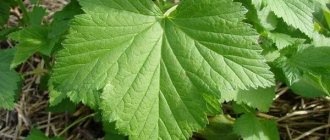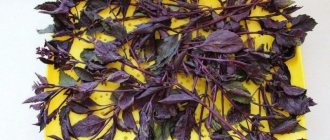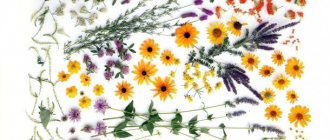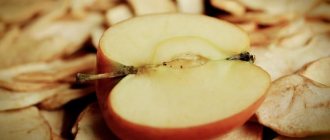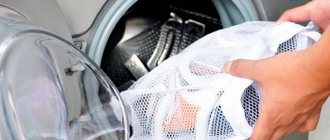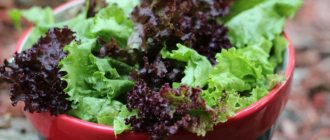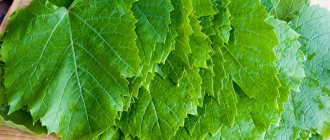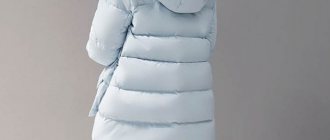Collection and preparation of lingonberry leaves at home
Lingonberry is an evergreen shrub belonging to the Heather family, in which almost all parts are useful and valuable - the berry, the stem, the leaf and even the root. All this can be used to prepare tea, decoction, infusion and other potions widely used in folk medicine for the prevention and treatment of a wide variety of ailments.
The article will discuss how to properly collect, dry and store lingonberry leaves so that the preparation combines a beautiful appearance, a fresh aroma, and at the same time the medicinal properties inherent in the plant.
Beneficial features
Lingonberries include organic beneficial acids, carbohydrates, carotene, pectin, and vitamins. The berries contain up to 15% sugar in the form of glucose and fructose, as well as phosphorus, iron, magnesium, and potassium. The leaves of the shrub are rich in tannins, carboxylic acids, and hydroquinone. Lingonberry seeds contain linoleic and linolenic acids.
The benefits of the leaves and berries of the plant have long been studied and proven, have been used in practice for centuries, and are recognized by science. If in
If you include lingonberries in your daily diet, you can avoid vitamin deficiency, bad mood and well-being.
Medicinal properties of lingonberries:
- helps normalize blood pressure;
- excellent diuretic;
- thanks to its antiseptic and bactericidal action, the plant actively fights various infections;
- stimulates the digestion process;
- has an analgesic effect.
Regular consumption of fresh lingonberries strengthens the walls of blood vessels, has an astringent effect, and reduces the level of capillary fragility.
In folk medicine, the plant is known as a wound-healing, tonic, antiscorbutic and antipyretic substance.
Features of collecting lingonberry leaves
In order for dried lingonberry leaves to be brewed in winter and used as a cure for diseases, it is important to choose the moment for collection when the raw material has the richest chemical composition.
During the harvesting process, it is important to take into account the location of the lingonberry and its condition, calendar dates, time of day, weather, as well as the age of the leaf itself.
Deadlines
The ideal time to prepare medicinal raw materials is the beginning of spring. There is no point in going to the forest barely waiting for the snow to melt, because the young leaves should have time to bloom.
However, it is the early harvest of green mass that is the most useful, since with the activation of sap flow, all the vital forces of the plant are directed into it, and, therefore, every substance and compound that determines the healing properties of lingonberries is at this moment contained in the leaf plate in the maximum possible quantity.
A little later, in the stages of budding, flowering and fruiting, a redistribution of nutritional components occurs, and their main part begins to strive for flowers, ovaries and fruits, forcing them to ripen more actively.
In different climatic zones and depending on specific weather conditions, the period of formation of young shoots and fresh green mass of the current year may not coincide, but it is worth focusing on approximately April, before the flower buds begin to open.
Not so successful, but also a good option is autumn. After the last fruit on the bush has reached full biological ripeness (usually lingonberries finish ripening in late August - early September), and there are still several warm weeks left before winter, the plant again begins to grow green mass. If for some reason the training camp could not be held in the spring, there is a chance to do it at the end of the season.
There is no point in harvesting in summer. The material collected during this period of time not only has a relatively poor vitamin and mineral composition, but also does not dry well and then quickly deteriorates, so a full-fledged medicine cannot be obtained from such raw materials.
Terms and rules
In order for the plant to dry better, it must be dry and fresh. Herbalists recommend collecting medicinal raw materials at the beginning of the day, but not in the early morning, but after the sun has dried the dew on the plants.
Daytime and evening time are less suitable for harvesting , since too bright rays are stressful for tender young leaves; from excessive lighting they lose their juiciness and elasticity (the amount of juice in the leaf plate at the time of collection should be maximum, then during the drying process the liquid will evaporate , preserving all useful substances in concentrated form).
Cloudy weather for collection is allowed, but it is important that the air humidity is not too high.
It is obvious that improving your health, and, even more so, curing a specific disease with the help of nature’s gifts is possible only on the condition that the raw materials from which the corresponding folk remedy is prepared are environmentally friendly.
The presence of heavy metal salts, industrial waste, urban dust, dangerous pesticides and other foreign impurities that inevitably accumulate in plants located in environmentally unfavorable areas is unacceptable in any medicinal collection.
- A direct contraindication for use as a material for drying is the leaves of lingonberries growing:
- within the city limits;
- near industrial enterprises and other facilities, the operation of which is directly or indirectly related to air or water pollution;
- near the roadway, even if the traffic on it is not very busy;
- in any other environmentally unsafe places.
The best option for collecting leaves is a forest or your own suburban area. In this case, it is desirable that the bush is reliably protected from the wind, which can cause dust on its leaves, since no one washes the leaves before drying. Not all leaves are equally suitable for medicinal purposes.
It is better to select them according to the following criteria:
- small and, if possible, identical in size;
- absence of integrity violations, signs of pest damage and other external defects, as well as contamination;
- juicy green color;
- proximity to the top of the shoot (young leaves are more useful than old ones, but the plate must be fully formed, so you should try to cut off about the third leaf from the top and the next few copies located lower along the shoot).
How to dry lingonberries at home
Lingonberries, which have a specific bitter taste, have gained popularity among chefs.
They are widely used in cooking: preserves, fruit drinks, sauces, compotes, jam, jelly are prepared. To preserve the berries for the winter, they are frozen, filled with boiled water, preserved, and dried. Drying is a good way to preserve lingonberries and is a traditional method of harvesting. It is advisable to process the collected lingonberries very quickly. You can quickly and easily dry lingonberries in an electric dryer.
When drying, lay out the prepared berries in one layer, dry the berries at a temperature of 60°C. During the drying process, turn the berries several times to dry them evenly. Store dried berries in a tightly sealed glass container in a cool, dark place.
Recipes with lingonberry ingredient
How to dry lingonberry leaves at home?
First you need to know that the medicinal composition of lingonberry leaves can be preserved in it even after drying only if the raw materials are harvested immediately after collection. You should try to start the procedure no later than 4–5 hours after cutting the leaves from the bush.
If you leave the “harvest” in a basket for a long time, it will quickly lose both its original green color and partly its healing properties, which means that using such a product as a medicine will no longer be so effective.
There are three ways to dry medicinal raw materials:
- naturally (without the use of heating devices);
- in an electric dryer specially designed for this purpose;
- in the oven of a household gas or electric oven.
Whatever drying method is chosen, the procedure must begin with an inspection of the source material. Leaves brought home should be carefully poured onto a flat surface and sorted, separating debris, as well as discarding specimens damaged during transportation.
The following are possible options. The longest way is natural drying. In this case, the evaporation of moisture from the sheet plate is carried out due to air blowing, without additional heating.
Using this method, you can obtain the highest quality medicinal raw materials, since even not too high temperatures used in an electric dryer or oven lead to a partial loss of some vitamins and other useful substances contained in the starting material.
The purpose of drying is to stop the enzymatic processes occurring inside the plant cell and accompanied by the decomposition or transformation of biologically active elements that make up the raw material. Without moisture, the plant seems to be preserved. You need to extract moisture from the leaves as quickly as possible, but without radical heating.
Speed during drying is also needed in order to prevent the development of pathogenic microflora inside the leaves, which also requires a moist environment.
Air drying
The easiest way to solve this problem is to spread the sorted leaves in 1-2 layers on a clean paper or woven towel and place them in the attic. If the room has a metal roof, it will provide ideal natural heating for proper drying. It is only important that the room is well ventilated.
If there is no attic for drying, you can use any room with reliable ventilation and low humidity. It is possible to transfer the process to the open air if the weather is dry, but then a sun canopy is required.
For several days, while natural evaporation of moisture from the leaves occurs, they need to be turned over from time to time so that this process occurs evenly.
Correctly selected temperature conditions and lighting during drying are also of fundamental importance for the quality of the resulting medicinal raw materials. It should be borne in mind that these conditions for different plant species may differ fundamentally.
Thus, one of the most valuable components in lingonberries is essential oil. In order to preserve it, a temperature range of +25...+30°C and complete protection from direct sunlight is required.
The sun's rays, on the contrary, have a detrimental effect on drying leaves, as a result of which their chemical composition changes for the worse. This is clearly visible even externally: due to the decomposition of some of the useful substances, the plate loses its green color and becomes brown or black.
The moment of readiness can be assessed by the following criteria:
- disappearance of the characteristic odor (it will appear again when dried leaves are soaked while preparing decoctions and infusions);
- the appearance of a bitter taste with astringent notes;
- bending the sheet plate along the edges into a small arc;
- change in color (this is best manifested on the underside of the leaf, where brown veins appear; the outer side should remain green, but the shade becomes less rich).
When all four criteria have been established, the leaves should be carefully raked into one pile and left to lie in the same place for a few more days.
This will allow the material to absorb some moisture from the air, as a result, after placing the raw materials in envelopes, bags or glass jars, it will not crumble. If the leaves were dried on the shoot, they must be removed from the branches (threshed) before storing them.
In an electric dryer
An electric dryer is a quick alternative to natural drying. In this case, for lingonberry leaves you need to use a very gentle temperature regime. As a general rule, this indicator should not exceed +40°C, which will allow the process of preparing the finished product to be completely completed in 4–5 hours.
When lingonberry leaves are collected for treatment
Drinking a drink made from dried leaves helps not only maintain the health of the human body, but also get rid of many diseases.
But in order for the decoction or infusion to have all the beneficial properties, you need to know how and when to collect lingonberry leaves, how to properly dry and brew them.
1 When to collect
2 How to assemble correctly
3 How to harvest and store lingonberry leaves
4 How to brew lingonberry leaves
5 How to drink infusion, decoction and tea from lingonberry leaves
Lingonberry leaves can be collected in the spring before the budding stage and in the fall, after the berries have fruited. It is during these periods that the green mass contains the greatest amount of valuable substances.
In summer, there is no point in collecting raw materials for drying, since there is an outflow of vitamins into lingonberries, and the dried leaves are poorly stored.
Thus, it is recommended to have time to collect material either at the end of April - early May, or at the end of September - early October. More precise dates depend on the climatic zone of the region of the country in which the collection is made.
How to collect correctly
There is nothing complicated in collecting the green mass of lingonberries for further harvesting, but you need to follow a few simple rules:
You can carefully pick off only the leaves or cut off whole shoots. At the same time, you should not pull out lingonberry bushes along with the roots (although this is very easy to do, because its roots do not go deep into the ground), so that next year it will be possible to collect new raw materials in the same place again - the berry reproduces with the help of roots;
transportation of collected leaves to your home should be careful: you should not try to stuff the material tightly into the bag, but, trying not to break the leaves, fill it without pressing or crushing it;
After collection, lingonberry leaves must be immediately sent for further processing, without delay, otherwise the material will simply be spoiled (no more than 3 hours should pass from the moment of collection).
How to harvest and store lingonberry leaves
Harvesting lingonberry leaves involves only two operations: cleaning and drying.
At the first stage, you simply need to sort through the collected material, separating plant debris and individual specimens damaged during transportation.
Drying can be done in several ways:
outside (if the weather permits), but it is necessary to organize a special canopy, since when direct sunlight hits the leaves, most of the vitamins will simply be destroyed;
in a well-ventilated, dry room, you can spread the collected leaves in a thin layer on the work surface;
in the oven, set the temperature to minimum (about 400C) and open the door slightly. This drying will take about two to three hours, while in previous cases this operation takes several days.
In any case, during drying, in order to ensure that the leaves do not become overcooked, do not rot, and are evenly dried, they must be turned over periodically.
The quality of drying can be assessed by the following parameters: the leaves are slightly curved with the edges down, have no odor, and have a bitter taste.
The color on the outside of the leaf remains dark green, while the lighter underside is characterized by the presence of brown veins.
It is recommended to store dried lingonberry leaves in dry rooms without stagnant air in cardboard boxes or wooden boxes, the bottom of which is covered with a layer of paper.
If these simple conditions are met, the medicinal material can be stored for 3 years.
How to brew lingonberry leaf
You can brew your own prepared lingonberry leaves in different ways, it all depends on what disease you want to cure with their help.
